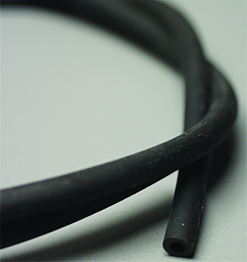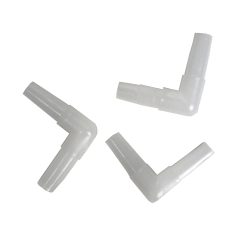CO2, Planted Tank Technique
Carbon Dioxide C02: Part One
by John Tullock
All plants need four basic things to survive. These are: sunlight, carbon dioxide, water, and minerals. In the aquarium or paludarium, water is never in short supply. Thus, light, carbon dioxide, and minerals become the important factors limiting plant growth. This series of posts will examine the role of carbon dioxide and the options available for maintaining an appropriate concentration of this vital substance in the planted aquarium.
Carbon dioxide is the starting point for photosynthesis. Carbon dioxide is present in the atmosphere at approximately 4 parts per million (ppm). The concentration of carbon dioxide in water varies with the temperature, pH and alkalinity of the water. Natural freshwaters, streams, rivers and lakes, contain varying amounts of carbon dioxide, but most plants grow where the concentration is roughly 10 ppm. A quick survey of recommendations from experienced aquarists places the optimal concentration at between 10 and 15 ppm. Carbon dioxide dissolves readily in water to form carbonic acid and bicarbonate. Some aquatic plants can obtain carbon either from dissolved carbon dioxide or from bicarbonate. Such plants are typically found growing in hard alkaline or brackish water where the concentration of free carbon dioxide is much lower than that of waters that are acidic and soft.
Simple planted aquariums can be designed that require no supplementation of carbon dioxide. If such systems are stocked with adaptable plant varieties, they can be successful, both artistically and as low-tech aquariums. Plant growth is likely to be slow, a disadvantage. On the other hand, algae growth is similarly inhibited, pruning and trimming are needed less often, and best results are achieved at relatively low levels of illumination.
That said, most planted tank enthusiasts will want to use a carbon dioxide injection system to maintain the optimal 10+ ppm concentration, and the attendant luxurious growth of the plants. (Note that such systems will require, as a rule, brighter illumination that those without supplemental carbon dioxide. That is a topic for another post.)
We will discuss assembling all the components of a carbon dioxide system in a future post, but for now, let us consider available means of determining the carbon dioxide concentration of your aquarium.
Bubble counts—Some hobbyists do not worry about water analysis and simply rely on counting the number of bubbles per minute of carbon dioxide injection that seems to give the best results. Those with green thumbs can obtain impressive results in this fashion.
Color indicators—Because the carbon dioxide concentration is a function of pH and alkalinity, continuous monitoring of the aquarium water using a chemical indicator permits an indirect measurement. The indicator dye changes color if the parameters shift outside the optimal range.
Automated systems—Automated systems offer complete and continuous control over the aquarium carbon dioxide concentration. One popular type of system uses a solenoid valve to control the supply of carbon dioxide from a compressed cylinder. The solenoid is, in turn, controlled by a timer that shuts off the supply when the lights are off. As plants do not consume carbon dioxide in the dark, this conserves the supply of gas in addition to minimizing the possibility of overdosing.
The ultimate automated system relies upon an electronic pH controller to continuously monitor the pH of the aquarium and administer a dose of carbon dioxide at a set point chosen by the aquarist. The obvious disadvantage of such a sophisticated system is its cost, but for larger, complex installations it may be the wisest approach.
All of the components for any of these monitoring and control methods are available here on the Sevenports web site.
NEXT: Part Two: Estimating Carbon Dioxide Via Direct Measurements














